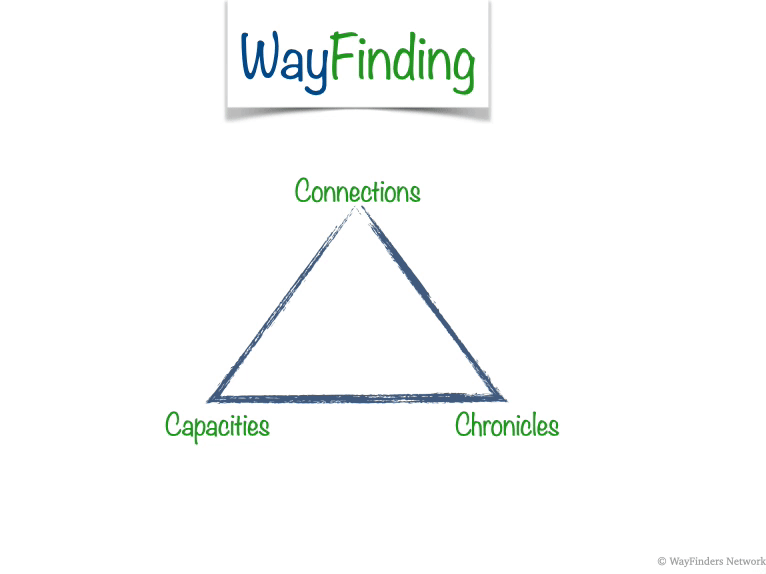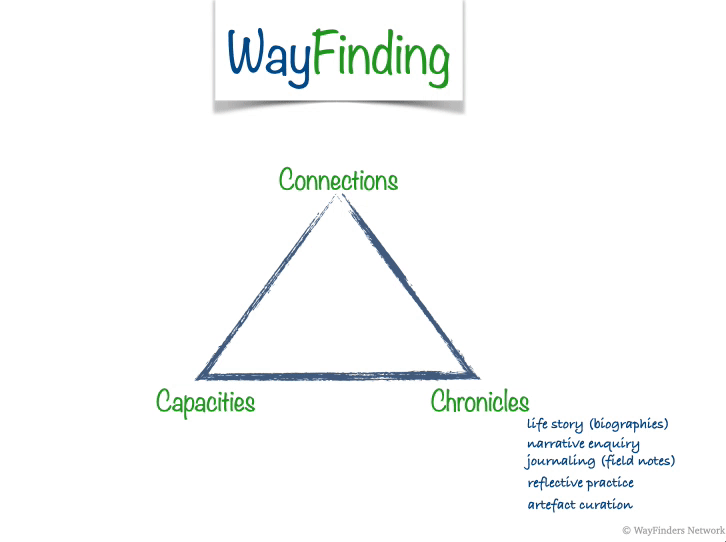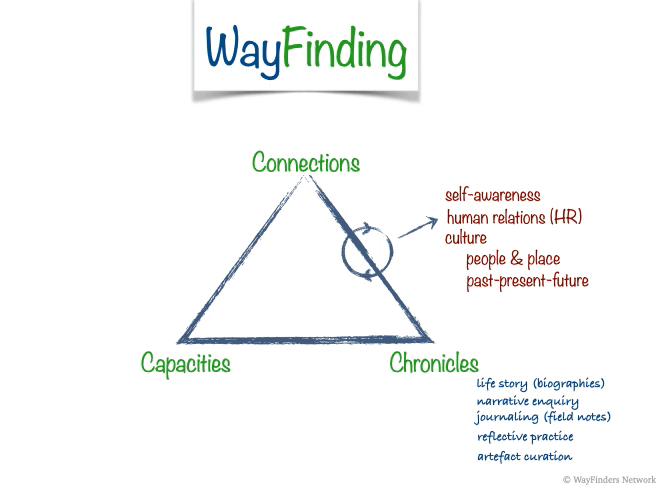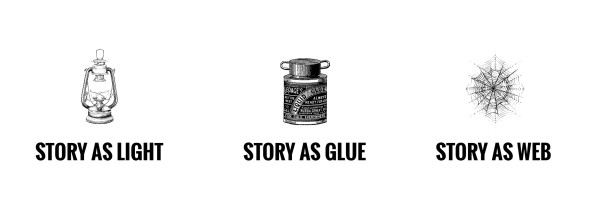Stories

This is the fourth post in a series on the core concepts underpinning the WayFinders Network & WayFinder Platform. These core concepts are…
-
WayFinder Philosophy (link)
-
Networks (link)
-
Action Learning (link)
-
Stories (this post)
-
“Working Out Loud” (next post)
It must have been well over 10 years ago. I lingered in the team meeting room whilst the players and staff filed out to get on with the next scheduled activity for the day. As I wandered out of the room alongside Neil, the senior coach, he turned to me and said “you know Uppy, sometimes I think coaching is just good story telling”. He was reflecting on the couple of stories he had just shared with the players and had sensed how well they had engaged the group.
I thought it appropriate to start this post on stories by sharing a story about…stories! #meta-stories 😉
What is it about stories? In the last 10 years it is a topic that I’ve found increasingly fascinating in theory, practice and through a heightened awareness of how they can shape, and are shaped by, culture.
Storytelling is a powerful mode of human expression that helps make sense of the past and to understand possible futures…coming together to exchange stories is an ancient tradition (link)
Speaking of ancient traditions, there is no more ancient wisdom on earth than that of indigenous Australians. I referenced the need to orient to indigenous wisdom and custodianship in this post, and front of my mind is the work and words of Tyson Yunkaporta…
Story takes you up, then down, leaving you in a place that is higher than before. It runs through everything in land, body, mind and spirit, tying together the shape of learning for all peoples (link)
It starts at a young age. Just like hiding the healthy vegetables amongst other portions of food on the plate, parents and wise elders tell their children stories that carry hidden but invaluable meanings and messages (narratives). Many of them take the form of fairytale and myth.
As I’m typing, it has struck me how we have a tendency to chide or query children about “telling stories” when we suspect they are not providing a particularly accurate account of events. This creates a useful juxtaposition, as capturing and sharing of non-fictional stories, ie providing an accurate account of events, is a core method and concept of the WayFinder Platform and therefore the primary focus of this post.
(that said, once shared we can abstract and reimagine stories to open up new ways of being, seeing and doing - perhaps more on that in future posts)
A couple of basic definitions of stories in this context…

Capturing and sharing this form of story could also be described as a chronicle - “a factual written account of important or historical events in the order of their occurrence” (In modern times “written” has been superseded by a range of digital media - text, image, video, audio).
WayFinding by individuals, teams and communities often requires, and/or results in, “new connections, new capacities and new chronicles”[^1]. The below lists some of the methods that can be used to generate chronicles (stories) on the WayFinder Platform…

Documenting and exploring our own life story in depth, perhaps with a mentor or coach, can increase self-awareness and connect us with an authentic “way of being”.
Sharing personal stories with others in real-time, or asynchronously via digital chronicles, can strengthen connection between people (relational quality), develop empathy and an embracing of different perspectives.
The cultural work of anchoring stories to artefacts, or uncovering the stories of historical artefacts, can connect us with people and place, and link past-present-future.

We can also use methods such as journaling and reflective practice to grow the skills and capacities for excelling in a certain domain or bringing about change in organisations and communities. By testing our capacities and chronicling the results we are engaging in action learning (previous post) and, when sharing with others, “working out loud” (next post).

The power of stories for systemic change is also being increasingly recognised. I would strongly encourage you to read this brilliant piece from Ella Saltmarshe - Using Story to Change Systems - where she explains 3 ways stories can function…
I’ve grabbed a selection of quotes from Ella…
Stories shape how we understand the world, our place in it, and our ability to change it.
We often fail to see the stories that govern our lives. If we want to change specific systems, we need mirrors to help us understand existing narratives and their impact, and the tools to author new ones.
Technology is enabling more and more participatory storytelling
We need to develop new processes of collective storytelling to help us navigate these turbulent and polarizing times. It is time for systems change practitioners and storytellers to work together in new ways to build a better world so that “living happily ever after” exists off the page, as well as on it.
(seriously, go and read Ella’s piece 🙂)
I’m hoping the WayFinder Platform can make a humble contribution to Ella’s call for tools, technology and processes that enable collective and participatory storytelling and the authoring of new narratives for a better world.
Opening image credit: Coconino National Forest, Public domain, via Wikimedia Commons
[^1]: this phrasing emerged from the work of my colleagues Al Smith and Jono Byrne at myfastestmile (two amazing storytellers!)
